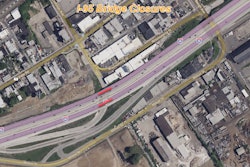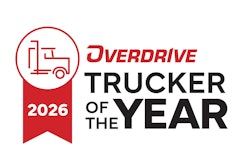Trucking news and briefs for Wednesday, June 14, 2023:
What are the most dangerous times to drive?
Analysis of five years of traffic accident data shows the most dangerous hour to drive in the U.S. is 6-7 p.m., with 8,563 road deaths recorded during the period. The study by Forbes Advisor analyzed National Highway Traffic Safety Administration data from 2016 to 2020 to reveal the number of fatalities from road accidents in each U.S. state for each hour, day, and month.
The highest number of road accident deaths occur on a Saturday (25,907 fatalities), and October (13,566 road accident fatalities) is the month with the most fatalities combined between 2016 and 2020.
The second most dangerous hour is from 8-9 p.m., during which time 8,387 fatalities occurred between 2016 and 2020, while 9-10 p.m. has the third highest total, with 8,241 deaths.
Weekends in general were considerably dangerous, with 23,147 traffic deaths on Fridays, for the second highest total, and 23,038 on Sundays, high enough for third place.
July is the second deadliest month with 13,483 deaths, and September’s total of 13,404 is the third highest.
Looking at individual states, the most dangerous time in 13 states was 5-6 p.m. In the majority of states, the hour when the most road accident deaths occurred was generally between 3 and 10 p.m.

In total, 40 states have Saturday as their most dangerous day to drive, while six states had Friday as the day with the highest number of crash fatalities -- Washington, New Hampshire, Vermont, Delaware, Oklahoma and Mississippi. Thursday is the most dangerous day in West Virginia, while it was Sunday for New Jersey and Nebraska, and Monday for Rhode Island.
Monthly data shows that July is when the highest number of road accident deaths occur in 14 states, while September and October are the most dangerous in 12 states each.
Outliers included Florida, where March ranks as the month with the highest number of fatalities; Arizona (April); and Hawaii and California (November).
[Related: I-94 in Detroit the nation's riskiest stretch of road: Study]
Truck parking survey hopes to inform state DOTs
The Transport Research Board (TRB) wants truck driver input on a new survey designed to create create a guidebook for State DOT's on truck parking.
With billions in funding at the state and federal levels to ease the truck parking crisis, and the majority of resistance against truck parking expansions coming at the local level, this survey hopes to "understand truck driver needs, community concerns, truck parking demand, challenges faced by industrial developers and facility operators, and opportunities for developing solutions that benefit all."
The survey includes a multiple choice section of general information and a second part called social pinpoint that allows you to drop a pin on a map of the United States to identify specific areas in critical need of truck parking, or where truck parking needs improvement.
"We need drivers to be specific, not general in description," Real Women in Trucking founder and TRB member Desiree Wood said of the survey. So, instead of saying truck parking is needed "everywhere," she advises drivers "say 'east side of Houston, Texas, on I-10' or an intersection and drop the pin there."
The survey works on mobile and desktop, and responses are due by next Thursday, June 22.
Maintenance costs stabilizing but remain high
Parts and labor expenses stabilized during the first quarter this year, according to data released Wednesday in the latest Decisiv/American Trucking Associations’ Technology & Maintenance Council North American Service Event Benchmark Report.
While high prices for parts and higher wages for labor during the past year are unlikely to return to prior levels, the latest Decisiv/TMC Benchmark Report -- organized by Vehicle Maintenance Reporting Standard system level codes -- shows a slowing of cost increases.
"Fleets are weathering the impact of aging trucks and higher parts prices, and are addressing the need for technicians,” said Decisiv President and CEO Dick Hyatt. “The data that Decisiv collects and analyzes for the TMC Benchmark Report on Vehicle Maintenance Reporting Standard system level codes clearly indicates that service costs are more stable.”
Compared to the fourth quarter of last year, repair costs rose only 0.7% -- a sizable drop when viewed against the more than 8% increase from a year earlier.
This recent report was expanded to incorporate service activity reporting on the parts and labor costs for the top 25 VMRS system codes, which account for more than 97% of the total service activity during the first quarter of 2023.
Between the fourth quarter of 2022 and the first quarter of this year, parts costs dropped by 0.4% and labor costs increased 2.3%, reflecting that new vehicles backordered for historically long periods are finally reaching end users. There is also a general decrease in mileage across all trucking segments, driven down by a reduction in freight volumes.
According to data released monthly by ATA, on-highway truck tonnage continues to fall annually, and on a month-to-month basis.
[Related: Updated: Maintenance know-how to stay ahead of the inspectors]
Pilot adds digital payment provider Relay to truck stops
The Pilot Company is partnering with digital payment network Relay Payments in an effort to combat a rise in card skimming across the country.
With Relay Payments now available at more than 800 of Pilot’s travel centers, truck drivers will now have access to reliable, digital, fraud-free payment transactions.
"We take fraud protection seriously and are always looking for innovative solutions to support the needs of our fleet customers," said David Hughes, senior vice president of sales for Pilot Company. "Digital payment technologies like Relay provide fleets with enhanced anti-fraud capabilities and improve the ease of commercial diesel transactions.”
Fleets of all sizes can now use Relay for payments at more than 800 participating Pilot, Flying J, and One9 Fuel Network travel centers in the U.S., and can continue to leverage their existing savings and direct billing arrangements with Pilot on the Relay platform. Carriers also benefit from Relay's fraud mitigation measures, contactless technology, transparent fees, and access to Relay's 24/7 U.S.-based customer support.
"Fuel fraud and outdated payment technologies hurt the entire supply chain, costing fleets, merchants, and drivers hundreds of millions of dollars each year," said Relay co-founder and president Spencer Barkoff. "By offering our services at Pilot Company locations, we are able to provide reliability, security, and flexibility for carriers and drivers, all while reducing fraud.”
Relay first introduced its digital payment offering in 2019 to eliminate long delays that forced drivers to wait hours for payment approvals and authorizations.







